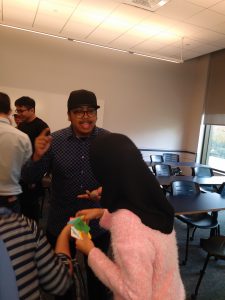This is a followup post to “Simulating in the classroom (Part I)” which can be accessed here.
A second simulation, called Ba Fa’ Ba Fa’ I have found to be particularly effective. This one was also created by Gary Shirts and has been used by the Peace Corps for decades to teach new corps members the dangers of seeing the world through one’s own cultural lens. To set up the simulation, a brief introduction of two cultural groups is provided. The groups, named Alphas and Betas, separately learn the rules of their new culture in different rooms—two facilitators and two rooms near each other are required for this simulation to work. The Alpha culture is a touchy-feely relationship-oriented culture, with high context, and strong ingroup outgroup mentality. The Beta culture is a highly comp
etitive trading culture which speaks a “foreign language.” Once participants learn the rules of their culture observers and visitors are exchanged. In the words of the creators: “The resulting stereotyping, misperception and misunderstanding becomes the grist for the debriefing.” In the debrief instructors can start by having students explain their perceptions of the “other” culture, which typically focus on the negative such as describing Betans as “cold,” “greedy,” and “weird” or describing Alphans as “lazy,” “mean,” and “unfriendly to outsiders.” What is fascinating is that students describe the “other” culture in contrast to their newly acquired Alpha/Betan culture, which they learned only at the start of the simulation. If this is the case in this simulation imagine what years of living in your own culture does to one’s lens? It is a great starting point for a varied discussion on the impact of culture on beliefs, stereotypes, and communication.

Briefly described here, a third simulation, created by Dr. Peter Diplock, Assistant Vice Provost at the Center for Excellence in Teaching and Learning at the University of Connecticut, puts students into groups representing two railroad companies, who the instructor notes at the start are “non-competitor companies,” tasked with negotiating about use of a shared rail line. The negotiations take place across multiple rounds (one for each pair of students) and allows students to practice negotiation skills individually in front of the class. Yet what typically happens is that the groups get competitive, despite knowing that one of the companies is larger and will make more profit. Instead elements of human nature focused on competition rather than cooperation emerge, leaving a lot of profit on the table and setting up strong discussion on why the competitive side won out in the simulation—which always occurs. *More details on this simulation is available upon request as it does not have an official website.
Overall, students get emotional, spirited, and keep conversations going about these simulations throughout the semester. I have found such simulations are powerful for exposing students to ideas of implicit bias, power, and to the strong cultural lenses that reside in all of us as socialized human beings. When they see these ideas taking shape through their own actions in the simulations it makes the concepts come to life in ways simply reading about them often does not. Of course, simulations also help break up long lectures—why simply tell someone about a concept when you can make them enact it through their own actions? Experience–based learning endures as I’ve had students remember these powerful lessons many years later—certainly more so than my Power Point lectures.